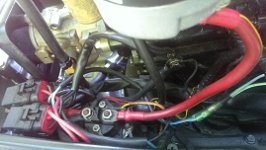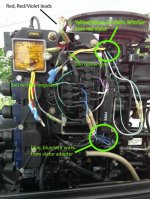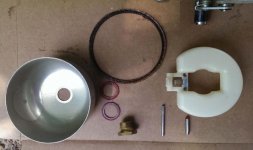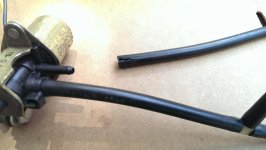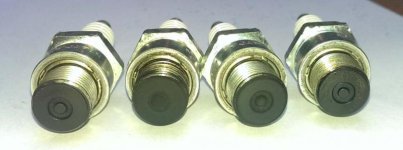I purchased a Bayliner Capris with a 1994 Force 120 HP (SN 0E093566), and did some lower end and cooling system work with help from this forum.
I removed the prop and placed the engine in a 100 gal trough. Started up fine after priming the engine and turning the key a few times. 1200-1400 RPMs in idle, and I had it up to 3200-3400 RPM in forward. Water pressure was about 3 PSI in idle. Turned engine off after about 20 mins.
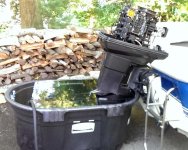
Waited about an hour, then tried to start it up again, but it wouldn't run. Spark plugs and #1 and #2 were black, while #3 and #4 looked clean. I cleaned the plugs and below are the before and after pictures.
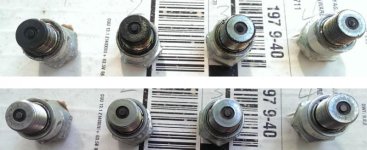
Compression test shows 145, 150, 155, 150 psi.
I have the 1992 shop manual so I can work through the voltage and resistance measurements.
I tried the spark plug test with a tester, and didn't see any sparks. But I was cranking the engine with my remote switch connected to the starter, and not with the ignition key.
This is what the voltage regulator looks like. The black, burned looking areas were there when it was purchased.
Does this look OK? Can I test it?
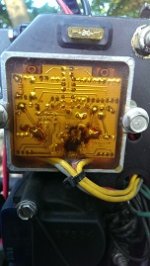
How do I use the remote switch to test the sparks, stator and power pack voltages, so that I do not have to turn the ignition key?
TIA,
Chandran
I removed the prop and placed the engine in a 100 gal trough. Started up fine after priming the engine and turning the key a few times. 1200-1400 RPMs in idle, and I had it up to 3200-3400 RPM in forward. Water pressure was about 3 PSI in idle. Turned engine off after about 20 mins.

Waited about an hour, then tried to start it up again, but it wouldn't run. Spark plugs and #1 and #2 were black, while #3 and #4 looked clean. I cleaned the plugs and below are the before and after pictures.

Compression test shows 145, 150, 155, 150 psi.
I have the 1992 shop manual so I can work through the voltage and resistance measurements.
I tried the spark plug test with a tester, and didn't see any sparks. But I was cranking the engine with my remote switch connected to the starter, and not with the ignition key.
This is what the voltage regulator looks like. The black, burned looking areas were there when it was purchased.
Does this look OK? Can I test it?

How do I use the remote switch to test the sparks, stator and power pack voltages, so that I do not have to turn the ignition key?
TIA,
Chandran


